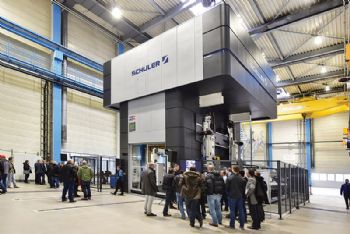
In 1993, Schuler (
www.schulergroup.com) delivered its first three hot-stamping lines to automotive manu-facturer Ford, in the USA.
What was a brand-new method at the time has since established itself as a global forming technology, and the company has now sold its 100th hot stamping line — to a Chinese automotive supplier.
Daniel Huber, head of the hydraulic division at Schuler, said: “Compared with forming aluminium, carbon fibre-
reinforced plastics and dual phase steels, this technology is an inexpensive alternative for lightweight automobile construction.”
Oemer Akyazici, the CEO of Schuler China, said: “Chinese automotive manufacturers and automotive suppliers — such as Shanghai Superior Die Technology or Baowei — are increasingly turning to hot stamping.”
The process, which involves heating sheet-steel blanks to 930°C and cooling them during forming, was first introduced in the early 1990s — initially to improve passenger safety in vehicles (for example, to reinforce the doors of the Saab 9000, thus helping it to pass the stricter crash tests in the USA).
The technology was first used for large series production of the Ford Sierra in Europe and the Ford Mercury in the USA; it was used to make the side impact beams and bumpers.
After the turn of the century, the industry increasingly saw its potential for reducing vehicle weight while keeping pace with more stringent safety requirements.
Because hot-stamped (press-hardened) components have a greater tensile strength than cold-formed high-strength steels, less material need be used, making the components lighter.
In 2006, the body of the Volkswagen Passat was the first to feature 12 press-hardened components, after Schuler built six hot-stamping lines in the shortest-possible time and installed them at VW’s Kassel plant.
Currently, some 500 million hot-stamped parts are produced annually on more than 400 systems world-wide.